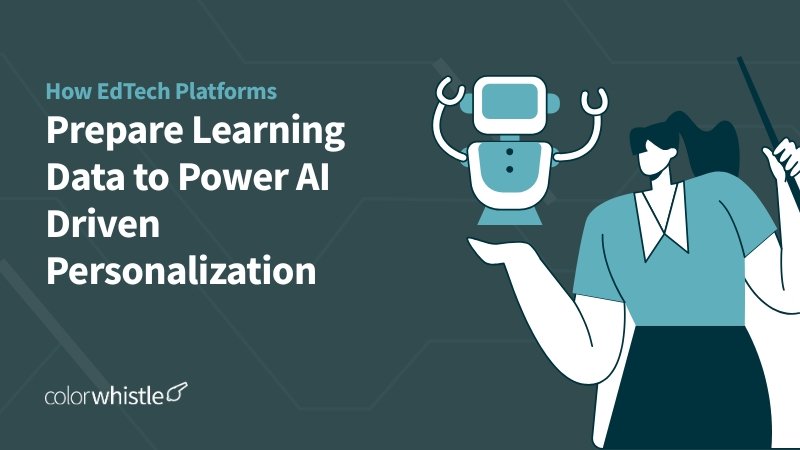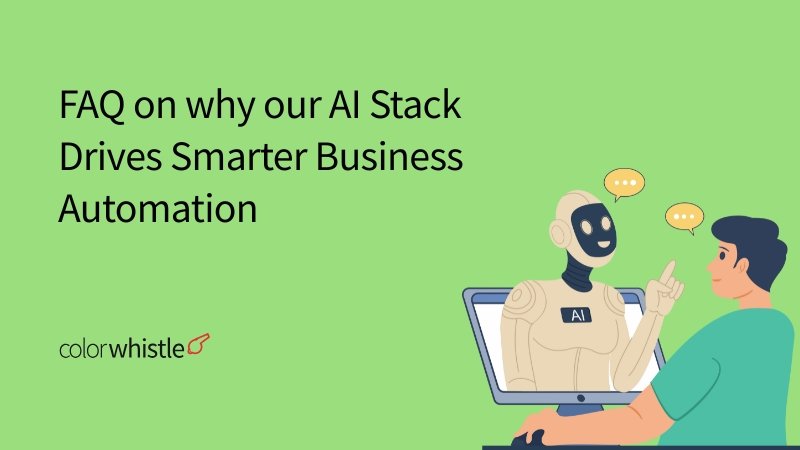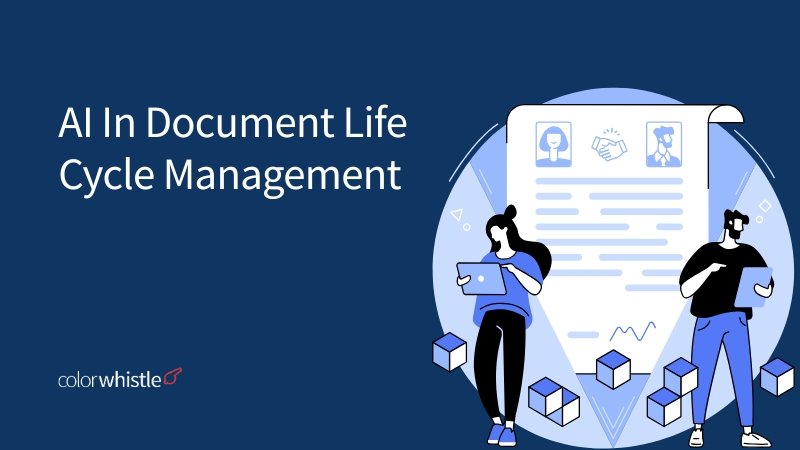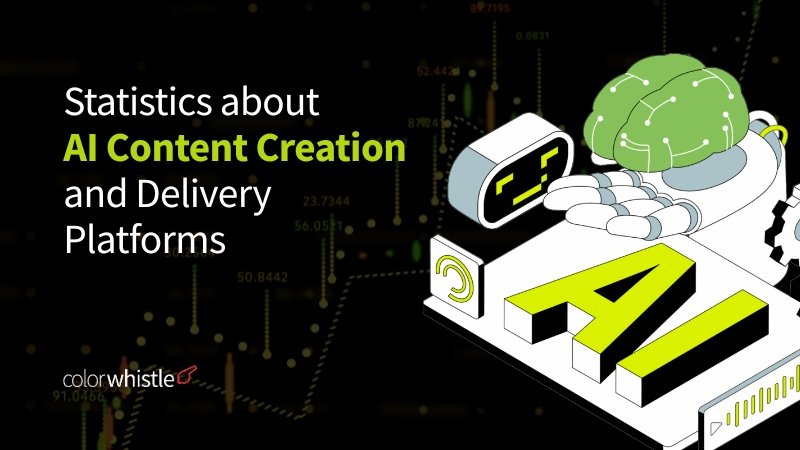Personalized learning experiences have become a cornerstone of modern education, directly impacting student engagement, comprehension, and long-term success. No two learners are alike; students enter classrooms with diverse backgrounds, abilities, and learning preferences.
By using data and artificial intelligence, EdTech platforms can respond to these differences at scale, making individualized instruction not just aspirational but achievable.
How EdTech Platforms Prepare Learning Data to Power AI-Driven Personalization:
- Data Collection: Learning platforms collect extensive data points, including test scores, assignment submissions, time spent on activities, and participation in discussion forums.
- Profile Building: These platforms use AI algorithms to analyze raw learning data, creating detailed learner profiles that highlight strengths, gaps, interests, and progress.
- Dynamic Adaptation: Using these insights, the platforms can:
- Recommend targeted resources or remedial modules,
- Adjust content difficulty based on real-time performance,
- Provide immediate feedback tailored to each student’s needs.
“AI-driven personalization transforms static course materials into adaptive learning journeys—ensuring each student receives the right support at the right moment.”
With the strategic use of data preparation and intelligent algorithms, EdTech companies create environments that enable personalized learning to be both scalable and sustainable. This approach not only maximizes educational outcomes but also sets a new standard for equity and efficiency in digital education. Moreover, integrating AI marketing tools into their strategy allows these platforms to enhance engagement and innovation in education further.
Collecting Clean and Labeled Data from Learning Management Systems (LMS)
The success of AI-driven personalization in EdTech relies heavily on the quality and organization of data collected from Learning Management Systems (LMS). It’s crucial to gather data effectively so that every student interaction, assignment submission, quiz result, and engagement metric is accurately recorded and labeled for future analysis.
Why High-Quality Data Matters for AI Personalization
- Precision in Personalization: Clean, well-labeled data enables AI models to precisely identify learning patterns, adapt instructional content, and optimize pathways for each student. For instance, unambiguous timestamps on quiz attempts or clear labels distinguishing between reading and assessment activities empower algorithms to distinguish between passive review and active problem-solving.
- Comprehensive Learner Profiles: High-quality data supports the creation of multidimensional learner profiles encapsulating academic progress, engagement trends, and behavioral nuances. These profiles are instrumental when generating tailored interventions or adaptive recommendations.
- Bias Reduction: Consistent labeling helps reduce algorithmic bias by ensuring that all relevant variables are appropriately represented in training datasets.
Challenges in Data Collection from LMS
Despite the potential, EdTech companies encounter several hurdles during the data collection process within LMS environments:
- Inconsistent Data Formats: Educational institutions often employ a variety of LMS platforms such as Canvas, Moodle, and Blackboard ,each with its export formats, metadata structures, and nomenclature. Harmonizing these disparate sources into a unified dataset requires extensive preprocessing.
- Data Noise and Incompleteness: Student activity logs may contain missing entries, duplicate records, or irrelevant interactions (e.g., accidental clicks), which must be cleaned to avoid contaminating training sets used for AI models.
- Labeling Complexity: Not every event within an LMS is self-explanatory. Differentiating between “meaningful engagement” (like forum participation) versus “surface-level activity” (such as page refreshes) demands thoughtful rules and sometimes manual intervention.
- Privacy Constraints: While anonymization is essential to protect student privacy during data collection, excessive redaction can strip away critical contextual clues needed for effective personalization.
“High-quality learning data is not simply about volume—it’s about clarity, consistency, and context.”
A robust approach to LMS data collection combines automation tools with strict validation protocols. Automated scripts extract raw event logs; these are then filtered through cleaning algorithms that flag incomplete or outlier events while human oversight resolves ambiguous cases. The resulting structured dataset fuels machine learning models capable of responsive personalization.
Maintaining this standard directly impacts the effectiveness of subsequent steps, such as identifying which types of data best support individualized instruction strategies.
To further enhance the online presence of education businesses leveraging these LMS systems, custom education website development services can provide exquisite online exposure tailored to meet specific business expectations.
Also Read
Types of Data EdTech Companies Can Use for Personalization
Understanding the full range of data available is crucial for EdTech companies looking to provide highly personalized learning experiences. The variety and quality of EdTech data directly affect the success of AI-powered personalization strategies. The main types of data used in this context are engagement data, performance data, and feedback data, each offering valuable insights into a learner’s journey.
1. Engagement Data: Mapping Student Interactions
Engagement data tracks how learners interact with digital content and activities within the platform. This includes:
Clickstream analysis: Monitoring which resources students access, how long they spend on each module, and their navigation paths.
Participation metrics: Recording contributions to discussion forums, group projects, quizzes, or virtual classrooms.
Resource utilization: Identifying patterns in video views, e-book readings, or use of supplementary materials.
By analyzing these interactions, EdTech algorithms can detect levels of interest, pinpoint disengagement moments, and identify learning preferences. For example:
A student who repeatedly revisits interactive simulations but seldom completes assigned readings may benefit from more visual or hands-on learning resources.
2. Performance Data: Assessing Academic Progress
Performance data provides a quantitative measure of student understanding and skill mastery. This category includes:
Assessment scores: Results from quizzes, assignments, exams, and standardized tests.
Concept mastery tracking: Monitoring progress through skill trees or competency frameworks.
Error analysis: Evaluating the types and frequency of mistakes to highlight persistent misconceptions.
Machine learning models use this information to customize content difficulty and recommend targeted interventions. For instance:
If a student consistently excels in algebra but struggles with geometry, the platform can adjust the curriculum to reinforce geometric concepts while allowing continued advancement in algebra.
Moreover, leveraging performance marketing strategies can further enhance these efforts by driving course enrollments through smart funnels and targeted lead generation.
3. Feedback Data: Reflecting Learner Perception
Feedback data adds a qualitative layer by capturing students’ perspectives on their personalized learning experiences. Methods include:
Surveys and polls: Gathering structured input on lesson clarity, engagement level, or perceived usefulness.
Open-ended responses: Collecting written reflections or comments after specific activities.
In-app ratings: Allowing students to rate adaptive exercises or AI-generated recommendations.
This type of data helps platforms evaluate the effectiveness of personalization efforts and refine AI algorithms based on authentic user sentiment. Consider the scenario:
If multiple learners report that adaptive quizzes are too challenging despite high engagement metrics, content difficulty thresholds can be recalibrated accordingly.
Analyzing these diverse types of data enables EdTech companies to build comprehensive learner profiles. The interaction between engagement patterns, performance outcomes (which can be optimized through effective performance marketing), and subjective feedback forms the foundation for increasingly precise and impactful personalization across digital learning environments.
How AI Algorithms Use Student Behavior Insights to Drive Personalization
AI algorithms are changing the game for modern EdTech platforms. They take student behavior insights and turn them into actionable strategies for personalized learning. These systems are sophisticated because they can process, interpret, and act on large amounts of diverse educational data, making tailored instruction possible on a wide scale.
Machine Learning Techniques: The Core Engine of Personalization
At the heart of How EdTech Platforms Prepare Learning Data to Power AI-Driven Personalization are machine learning techniques designed to handle massive amounts of complex, multidimensional data. These approaches enable platforms to:
- Aggregate and interpret engagement signals such as time spent on tasks, clickstreams, sequence of activities, and participation rates.
- Identify patterns and correlations within performance data by comparing scores across quizzes, assignments, and adaptive assessments.
- Incorporate qualitative feedback open-ended responses or rating scales using natural language processing (NLP) models that extract sentiment and detect student needs.
Commonly used machine learning models include:
- Clustering Algorithms: Group students with similar behaviors or challenges for targeted content recommendations.
- Classification Models: Predict the likelihood of mastery or risk based on historical and real-time inputs.
- Reinforcement Learning: Continuously adapt recommendations based on ongoing user interactions and outcomes.
- Collaborative Filtering: Suggest resources favored by peers with comparable learning profiles.
These models thrive on well-prepared data sets that capture the nuances of individual learner journeys.
Driving Personalization Through Data-Driven Insights
The true power of AI-driven personalization comes from how it is applied in practice. EdTech platforms use engagement, performance, and feedback inputs to create dynamic learner experiences:
1. Tailored Content Recommendations
AI algorithms analyze a student’s interaction timeline alongside aggregated peer data to:
- Recommend specific videos, readings, or interactive simulations aligned with demonstrated interests or gaps.
- Sequence content modules according to real-time progress accelerating advanced learners while reinforcing foundational concepts for others.
- Identify when a student appears disengaged with one modality (e.g., text) and automatically suggest alternatives (e.g., video or gamified exercises).
2. Adaptive Pathways
By tracking performance metrics over time, machine learning systems:
- Redirect learners who repeatedly struggle with particular concepts toward remediation modules or prerequisite refreshers.
- Advance students who demonstrate quick mastery of more challenging material without unnecessary repetition.
- Adjust pacing dynamically, slowing down when error rates increase or accelerating when high accuracy is sustained.
3. Real-Time Feedback Loops
Natural language processing enables prompt analysis of open-ended feedback:
“After each lesson, I receive questions that are just right—not too easy but not frustratingly hard.”
This is achieved as AI evaluates both correctness and the confidence behind answers, adapting future prompts accordingly.
4. Contextual Interventions
Platforms monitor engagement drops (such as skipped sessions or abrupt log-offs) in conjunction with performance dips to trigger timely nudges:
- Automated reminders
- Encouragement messages from virtual mentors
- Invitations to access peer discussion forums or tutoring sessions
Examples from Leading EdTech Platforms
Here are some examples of how leading EdTech platforms are using AI algorithms for personalization:
- Khan Academy’s mastery-based system leverages AI algorithms to continually assess each learner’s progress and recommend next steps tailored precisely to their needs.
- Duolingo employs reinforcement learning techniques that adjust daily practice challenges based on both current proficiency and past error patterns.
- Coursera uses collaborative filtering to suggest supplementary resources.
Adaptive Learning Systems: Customizing Learning Experiences with AI
Adaptive learning systems have transformed the way educational content is delivered, making customization a key feature of modern EdTech. These platforms use advanced AI algorithms to analyze a continuous stream of student data, such as quiz results, clickstream activity, time spent on tasks, and patterns of engagement. This analysis creates a dynamic learning environment that tailors educational materials, pacing, and assessment strategies to each learner’s unique profile.
Dynamic Customization of Content Delivery
AI-powered adaptive learning systems excel at real-time personalization by:
- Monitoring Progress Trajectories: Algorithms track student progress across multiple dimensions, such as mastery of concepts, speed of content consumption, and frequency of revisiting challenging topics.
- Identifying Interests and Preferences: By analyzing behavioral cues, such as which videos are replayed or which topics elicit more interaction, systems infer learners’ interests and tailor content recommendations accordingly.
- Adjusting Difficulty Levels: If a student consistently excels in certain areas, the system can increase the complexity of materials or introduce enrichment activities. Conversely, it offers remediation or additional practice when it detects struggle.
For example
An adaptive math platform might identify that a learner quickly masters algebraic expressions but falters with quadratic equations. The AI engine would then prioritize targeted resources, like step-by-step tutorials or interactive problem sets, for quadratics while accelerating progression through mastered concepts.
Impact on Student Performance and Engagement
The implementation of adaptive learning technologies has been associated with measurable improvements in both learning outcomes and engagement metrics:
- Higher Test Scores: Several large-scale studies demonstrate that students using adaptive platforms often outperform peers in traditional settings. In one case, learners utilizing adaptive pathways in STEM subjects achieved up to 20% higher end-of-unit test scores compared to control groups.
- Increased Engagement: Adaptive environments foster sustained attention by minimizing frustration from repetitive or overly difficult content. Students experience a sense of agency as they interact with material suited precisely to their skill level and interests.
- Personalized Motivation Strategies: Some systems incorporate gamified elements or personalized feedback loops that adapt based on individual motivation drivers, further boosting participation rates.
“Adaptive learning platforms helped me focus on what I actually needed to practice instead of repeating what I already knew. It made studying feel less overwhelming and more rewarding.”— High school learner using an AI-driven adaptive platform
Scalability Across Diverse Contexts
Adaptive learning systems are not limited to one subject area or age group. Their flexible architecture allows for deployment in K–12 classrooms, higher education institutions, corporate training environments, and even lifelong learning scenarios. By continuously refining their personalization engines with new data inputs, these platforms ensure ongoing relevance and effectiveness for every learner cohort.
EdTech’s adoption of adaptive technologies represents a significant shift towards personalized instruction, making education more responsive, efficient, and engaging for diverse populations.
Predictive Analytics: Proactively Addressing Academic Challenges with AI-Driven Interventions
Predictive analytics is changing the game in education by using past and present learning data to predict academic problems before they worsen. EdTech platforms use various statistical methods like regression analysis, decision trees, and neural networks to analyze multiple factors that affect student success. These factors usually include test scores, assignment completion rates, participation in online discussions, and even behavioral patterns such as how often students log in or how much time they spend on specific tasks.
Early Identification of At-Risk Learners
AI-powered predictive models are trained to detect subtle patterns and deviations from typical learning trajectories. When a student consistently underperforms on formative assessments or displays diminishing engagement over time, predictive analytics can flag these changes as early signs of potential academic challenges.
Example
A high school math platform might notice a student’s gradual drop in quiz scores combined with reduced practice activity. The system predicts a risk of falling behind in algebra concepts and alerts both the educator and the student, offering tailored support resources before grades suffer.
Tailoring Interventions with Precision
Beyond early detection, predictive analytics empowers educators and support staff to design highly targeted interventions for each learner. These interventions may include:
- Personalized study plans based on identified weak areas
- Automated nudges and reminders encouraging the timely completion of assignments
- Dynamic grouping for peer tutoring or collaborative projects with students facing similar challenges
- Direct recommendations for supplementary content or skill-building exercises
EdTech platforms often integrate dashboards that visualize individual risk profiles, progress trends, and recommended actions. Teachers can use these tools to prioritize their attention where it matters most—delivering one-on-one mentoring to those at greatest risk while allowing AI systems to manage routine nudges for the broader class.
However, the success of these platforms heavily relies on their user interface and experience. A poorly designed website can hinder the effectiveness of predictive analytics by making it difficult for educators and students to access the necessary information. Therefore, website redesign services that focus on improving user experience (UX) should be considered by EdTech companies to enhance their platforms.
Impact on Academic Outcomes
Institutions utilizing predictive analytics report measurable improvements in retention rates and academic performance. By shifting from reactive remediation to proactive support, students receive help when it can make the greatest difference. Predictive models also adapt over time as new data becomes available, making their forecasts more accurate and interventions more effective with each iteration.
“The power of predictive analytics lies in its ability to convert raw data into actionable foresight—enabling educators to intervene before academic difficulties become insurmountable obstacles.”
The evolution of predictive analytics is expanding the educator’s toolkit, ensuring that every learner has access to timely, individualized support on their educational journey.
Personalized Feedback Mechanisms: Enhancing Learning Outcomes through Real-Time Guidance with AI
Personalized feedback mechanisms are a cornerstone of effective AI-driven personalization in EdTech platforms. These systems aim to provide immediate, tailored guidance to students, enhancing their learning outcomes and fostering deeper engagement with educational content.
Cognitive Tutoring Systems
Cognitive tutoring systems are advanced AI tools designed to simulate one-on-one tutoring by understanding and responding to individual student needs. They analyze various data points, including:
Interaction patterns: Monitoring how students interact with the content.
Performance metrics: Assessing test scores and assignment results.
Behavioral data: Observing study habits and engagement levels.
These systems leverage sophisticated algorithms to deliver real-time feedback. For instance, if a student struggles with a particular concept, the cognitive tutor can identify this issue early and provide targeted exercises or explanations to address the gap. This personalized approach ensures that students receive support precisely when they need it, promoting continuous improvement and understanding.
Intelligent Chatbots
Intelligent chatbots serve as virtual assistants that help students navigate their learning journeys. By utilizing natural language processing (NLP) and machine learning techniques, these chatbots can interpret student queries and offer relevant feedback or resources. Key functionalities include:
24/7 availability: Providing round-the-clock assistance, ensuring students can get help outside regular school hours.
Adaptability: Customizing responses based on individual student profiles and historical data.
Interactive dialogue: Engaging students in meaningful conversations to clarify doubts and reinforce concepts.
For example, if a student asks for help with a math problem, the chatbot can guide them through the solution process step-by-step. By offering instant feedback, intelligent chatbots maintain high levels of accuracy in addressing diverse student needs.
High Accuracy Rates
The effectiveness of personalized feedback mechanisms hinges on their ability to adapt swiftly and accurately. AI technologies achieve high accuracy rates by continuously learning from vast amounts of educational data. Some factors contributing to these high accuracy rates include:
Data variety: Incorporating different types of data, such as textual inputs, numerical scores, and interaction logs.
Machine learning models: Employing advanced models that improve over time with increased data input.
Feedback loops: Implementing mechanisms where system performance is regularly evaluated and refined based on user interactions.
These technologies ensure that feedback is not only immediate but also highly relevant to each student’s unique learning context. As cognitive tutors and intelligent chatbots evolve, they become more adept at personalizing interventions, thus significantly enhancing educational outcomes.
By integrating personalized feedback mechanisms, EdTech platforms empower students to take charge of their learning processes while receiving timely support tailored specifically to their needs.
Designing Inclusive Learning Environments with AI-Powered Accessibility Features for All Learners’ Benefit
Creating inclusive learning environments is essential for ensuring fair educational experiences for all students. AI technologies play a crucial role in adapting content delivery methods to meet the specific requirements of students with disabilities, thereby fostering inclusivity.
Adjustments made to content delivery methods using AI technologies:
- Voice Recognition and Speech-to-Text: Tools that convert spoken words into written text enable students with hearing impairments to access auditory content in real-time.
- Text-to-Speech: This feature assists visually impaired students by reading out written materials, facilitating better comprehension without the need for visual input.
- Adaptive Interfaces: AI can modify user interfaces based on individual needs, such as enlarging text for those with visual difficulties or simplifying navigation for students with cognitive challenges.
- Predictive Text and Autocomplete: These functionalities support students with dyslexia or other learning disabilities by reducing the effort required to type and enhancing writing fluency.
Broader implications of enhanced accessibility through AI:
AI-powered accessibility features extend beyond merely accommodating disabilities; they play an integral role in promoting equity across diverse learner populations. By tailoring educational experiences to individual needs:
Students from varied backgrounds benefit from personalized learning paths that acknowledge their unique strengths and challenges.
Non-native speakers receive language support through translation and adaptation tools, ensuring they grasp content effectively.
Remote Learning Support: Students in remote or underserved areas gain access to high-quality educational resources that might otherwise be inaccessible due to geographical or infrastructural limitations.
In essence, AI-driven adjustments facilitate a more inclusive and supportive learning environment, enabling every student to achieve their full potential regardless of their physical, cognitive, or socio-economic barriers. This alignment of technology with educational equity underscores the transformative power of AI in creating universally accessible learning spaces.
Moreover, the implementation of such AI technologies often requires robust digital platforms. Leveraging professional WordPress Development Services can significantly enhance the effectiveness of these AI-powered solutions by providing customizable and scalable web solutions tailored to the unique needs of educational institutions.
Ethical Considerations in Preparing Learning Data for AI Personalization: Balancing Innovation with Responsibility
AI-driven personalization in EdTech platforms relies on the collection and analysis of vast quantities of student data. With this power comes significant responsibility, especially regarding ethical considerations that must guide every stage of the data preparation process.
Safeguarding Sensitive Student Information
Handling sensitive student information demands rigorous ethical standards. Personal identifiers, demographic details, learning disabilities, and performance records constitute deeply private information. To uphold trust:
- Data anonymization is essential before processing or sharing data for algorithmic training.
- Consent mechanisms must be transparent and robust, ensuring students and guardians understand how their data will be used.
- Compliance with legal frameworks such as GDPR, FERPA, and COPPA is non-negotiable to protect privacy rights across jurisdictions.
These practices not only shield learners from potential misuse but also reinforce the legitimacy and reliability of AI-powered educational tools.
Also Read
Addressing Algorithmic Bias and Educational Equity
The risk of algorithmic bias poses another critical ethical challenge. When training data reflects historical inequalities, such as underrepresentation of certain groups or regional disparities, AI models can unintentionally perpetuate or even amplify these gaps. This can manifest in:
- Biased content recommendations that disadvantage minority or marginalized learners.
- Disproportionate intervention triggers, skewed towards specific demographics due to flawed input data.
- Limited accessibility features, if datasets lack diversity in learner abilities or backgrounds.
Mitigating these risks requires proactive strategies:
- Continuous auditing of algorithms for bias throughout development and deployment.
- Diverse data sourcing to ensure all student populations are represented in training sets.
- Ethical review boards that scrutinize both the design and impact of AI systems within educational contexts.
“Ethics is knowing the difference between what you have a right to do and what is right to do.” — Potter Stewart
Ethical considerations are not barriers but essential pillars supporting innovation in EdTech. Through responsible stewardship of learning data, platforms can harness AI’s transformative potential without sacrificing equity or trust. The ongoing evolution of personalization technologies underscores the necessity for vigilance and accountability at every stage.
Overcoming Challenges Faced by EdTech Platforms in Implementing AI-Driven Personalization Strategies
Limitations Imposed by the Digital Divide
Equitable access to advanced AI tools remains a significant hurdle for many educational institutions. The digital divide, characterized by disparities in access to technology and internet connectivity, affects students’ ability to benefit from AI-driven personalization. Schools in under-resourced areas often lack adequate infrastructure, such as high-speed internet and modern devices, crucial for implementing sophisticated EdTech solutions.
- Access Inequality: Students without reliable internet or devices miss out on personalized learning opportunities that their peers with better access can utilize.
- Resource Allocation: Educational institutions must prioritize resource allocation to bridge this gap, ensuring all students can benefit from AI-enhanced learning experiences. This is where education digital marketing services can play a vital role in optimizing resources and improving digital accessibility.
Concerns About Algorithmic Bias
Algorithmic bias presents another challenge, potentially reinforcing educational disparities among different student demographics. Bias can stem from historical data used to train AI models or from inherent assumptions within algorithms.
- Bias in Data: If the data reflects existing inequalities (e.g., lower performance scores from marginalized groups), AI systems might perpetuate these patterns rather than mitigate them.
- Model Design: Algorithms need careful design and continuous monitoring to ensure they do not favor certain groups over others.
Addressing Algorithmic Bias
EdTech platforms must adopt strategies to counteract algorithmic bias:
- Diverse Data Sets: Incorporating diverse, representative data sets during model training helps create more balanced AI systems.
- Regular Audits: Conducting regular audits of AI models ensures they operate fairly and equitably across all demographics.
- Ethical Frameworks: Implementing ethical guidelines for AI development supports responsible innovation that prioritizes inclusivity.
By proactively addressing these challenges, EdTech platforms can enhance the effectiveness of AI-driven personalization while promoting equitable access and minimizing the risks associated with algorithmic bias. Additionally, leveraging advanced web development services tailored for educational institutions can significantly improve the implementation of these strategies. Moreover, adopting a student-centric approach in web design can further facilitate personalized learning experiences for students.
The Future of Personalized Learning Experiences Powered by Data-Driven AI: Opportunities and Directions Ahead
Emerging trends are changing the way personalized learning works, thanks to ongoing improvements in data-driven AI technologies. These new developments promise to make EdTech platforms even better, giving them the power to offer more customized educational experiences. Here are some of the main trends to look out for:
Increased Use of Predictive Analytics
Advanced algorithms will better anticipate student needs, allowing for preemptive intervention strategies.
Integration of Multimodal Learning Environments
Combining various types of media (videos, interactive simulations, etc.) to cater to diverse learning preferences.
Enhanced Real-Time Feedback Mechanisms
More sophisticated cognitive tutoring systems and intelligent chatbots offer immediate, tailored support.
People involved in education are encouraged to embrace these technological advancements with a focus on responsible innovation. It is crucial to prioritize inclusivity and equity in leveraging technology for personalized instruction. By ensuring that AI tools are accessible and free from bias, educators can foster a more equitable learning environment.
Moreover, the implementation of AI-powered website maintenance for educational institutions can significantly improve the online learning experience. Such advancements ensure that education websites remain fast, secure, and accessible, thereby enhancing user engagement.
The future of personalized learning experiences powered by data-driven AI holds immense potential. As EdTech platforms continue refining their approaches to preparing learning data, the goal remains clear: create adaptive learning environments that enhance engagement, accessibility, and educational outcomes for all learners.
FAQs (Frequently Asked Questions)
What is the role of data in AI-driven personalization for EdTech platforms?
Data is fundamental in enabling AI-driven personalization on EdTech platforms. By collecting and preparing high-quality learning data, these platforms can leverage AI algorithms to tailor educational content and experiences to individual learners’ needs, enhancing engagement and learning outcomes.
How do EdTech platforms collect clean and labeled data from Learning Management Systems (LMS)?
EdTech platforms gather clean and labeled data by systematically extracting engagement, performance, and feedback information from LMSs. This process involves addressing challenges such as data inconsistencies and ensuring accuracy to support effective AI personalization strategies.
What types of data are used by EdTech companies for personalization?
EdTech companies utilize various data types, including engagement data (tracking student interactions), performance data (assessment results analysis), and feedback data (student responses on personalized interventions). These datasets collectively inform AI models to customize learning pathways.
How do AI algorithms use student behavior insights to drive personalization in learning?
AI algorithms analyze large volumes of educational data using machine learning techniques to identify patterns in student behavior. By processing engagement, performance, and feedback inputs, they recommend tailored content or adjust learning paths dynamically to suit individual learner profiles.
What are adaptive learning systems and how do they customize learning experiences with AI?
Adaptive learning systems employ AI algorithms to dynamically modify content delivery based on each learner’s progress and interests. These systems have demonstrated improvements in test scores and student engagement by providing customized educational experiences that respond in real-time to learner needs.
What ethical considerations must be addressed when preparing learning data for AI personalization?
Ethical considerations include ensuring the responsible handling of sensitive student information, mitigating algorithmic biases that could perpetuate educational inequalities, and balancing innovation with fairness. Addressing these concerns is vital for creating equitable personalized learning environments.
What’s Next?
Now that you’ve had the chance to explore our blog, it’s time to take the next step and see what opportunities await!





